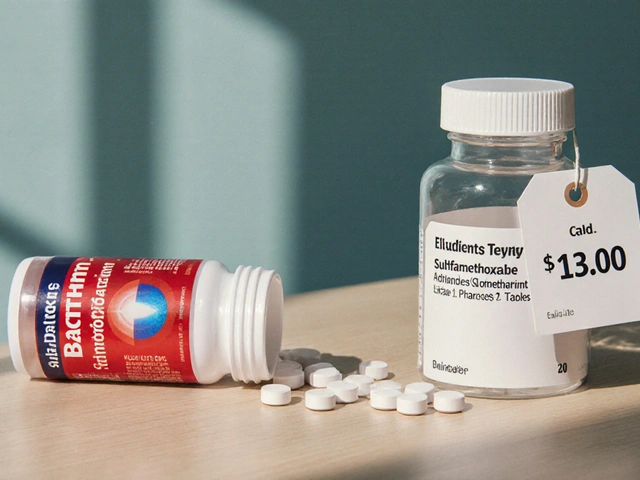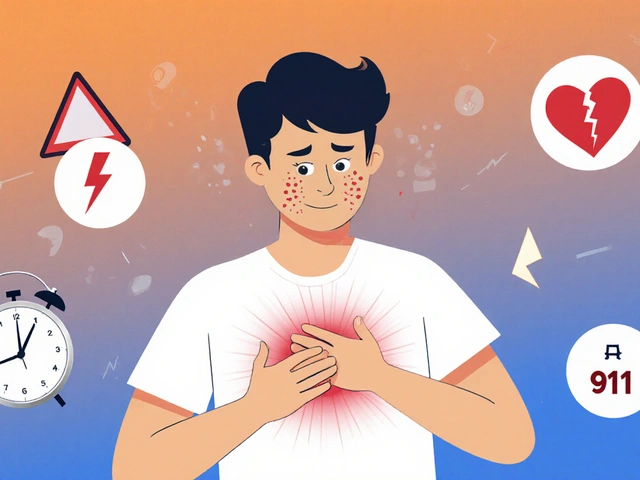Ethical Dilemma Simulator
Explore how different ethical principles interact in real-world healthcare scenarios. Select a scenario below to begin.
Autonomy vs. Beneficence
A patient refuses a life-saving treatment despite understanding the consequences.
Justice vs. Equity
Limited resources must be distributed fairly among diverse populations.
Non-Maleficence vs. Justice
A new drug shows promise but may cause serious side effects in vulnerable populations.
Public Health vs. Individual Rights
Mandatory vaccination policies during an outbreak conflict with personal beliefs.
When you fall ill, you expect care that respects your dignity, rights, and the broader needs of society. Yet the line between what we owe each other as patients and what the system can realistically deliver is riddled with moral questions. This article untangles the biggest ethical dilemmas surrounding sickness and the way healthcare is provided, giving you clear principles, real‑world examples, and a practical checklist you can use today.
What does "ethics of sickness" actually mean?
At its core, the ethics of healthcare is the study of moral values that guide how medical services are delivered, especially when people are ill. It draws on centuries‑old ideas like beneficence (doing good) and newer concerns such as health equity. When a person is sick, the situation changes from a purely personal matter to a public one because resources, risk, and responsibility intersect.
Core ethical principles that shape every decision
Four pillars dominate modern medical ethics. They aren’t just academic jargon; they’re the lenses through which doctors, policymakers, and patients view every treatment choice.
| Principle | Key Question | Typical Application |
|---|---|---|
| Autonomy | What does the patient want? | Informed consent, advance directives |
| Beneficence | How can we help the patient? | Choosing effective therapies, preventive care |
| Non‑maleficence | Could this do more harm? | Avoiding unnecessary procedures, side‑effect monitoring |
| Justice | Who gets what? | Resource allocation, equitable access |
Each principle can clash with another-think of a patient demanding a risky experimental drug (autonomy) when supplies are limited (justice). Understanding these tensions is the first step toward ethical clarity.
When sickness becomes a moral status
Philosophers argue that being ill grants a special moral status. The Sickness refers to a state of reduced health that often creates vulnerability and dependency. This vulnerability can justify extra care, but it also raises questions: Should society prioritize sick individuals over healthy ones? Do chronic conditions merit the same urgency as acute emergencies?
Real‑world data shows a stark gap. In Canada, people with chronic illnesses use health services 2.5 times more often yet experience longer wait times for specialist appointments (Canadian Institute for Health Information, 2024). The ethical response is to recognize sickness as a legitimate claim to resources, while also safeguarding fairness.
Resource allocation: Who gets the ventilator?
During the COVID‑19 surge, hospitals faced the impossible choice of assigning limited ICU beds. The dilemma is a textbook case of distributive justice. A common framework looks at three criteria: medical need, chance of benefit, and social value. Critics argue that “social value” can embed bias, favoring those deemed productive.
To illustrate, imagine two patients: a 30‑year‑old teacher and a 70‑year‑old retiree, both needing a ventilator. If resources are scarce, should age or projected years of life influence the decision? Many ethicists recommend a lottery system after clinical triage, ensuring that once medical urgency is equal, chance-not status-drives the allocation.

Health equity and the principle of justice
The Health equity means that everyone has a fair opportunity to attain their highest health potential is a cornerstone of justice. In practice, it means tackling systemic barriers: geographic deserts, income gaps, and racism in care delivery.
Consider the 2023 Ontario report showing Indigenous patients are 1.8 times more likely to be admitted for preventable conditions than the non‑Indigenous population. Ignoring such data is an ethical failure. Policies that fund community‑based clinics, offer transportation vouchers, and train culturally competent staff directly address the equity breach.
Patient autonomy in chronic illness
Chronic disease often forces patients into long‑term decision making. The Informed consent is the process where patients receive clear information to make voluntary choices about their care becomes an ongoing conversation rather than a one‑off signature.
Take diabetes management: a patient may choose a lifestyle‑first approach over medication, even if guidelines suggest early drug therapy. Respecting autonomy means doctors must present risks, benefits, and alternatives without coercion, while also monitoring outcomes to ensure the choice doesn’t lead to severe complications.
Public health vs. individual rights: The vaccination debate
When a contagious disease threatens the community, public health officials may impose measures that limit personal freedom-mandatory vaccination, quarantine, mask mandates. The ethical tension lies between protecting the population (justice, beneficence) and preserving individual autonomy.
Ontario’s 2022 measles outbreak saw a temporary school‑entry vaccination requirement. The policy reduced cases by 78% within three months, but it also sparked legal challenges citing bodily autonomy. A balanced approach often includes exemptions for genuine medical contraindications, transparent communication, and robust support for compliance.
Practical checklist for ethically sound healthcare provision
- Identify the ethical principle most at stake (autonomy, beneficence, non‑maleficence, justice).
- Gather all relevant facts: clinical data, patient preferences, resource availability.
- Consult guidelines from reputable bodies (e.g., Canadian Medical Association’s Ethics Handbook).
- Engage in shared decision‑making: Explain options, ask for values, document consent.
- Assess equity impact: Does the decision disproportionately affect marginalized groups?
- Seek a second opinion or ethics committee review when conflict persists.
- Monitor outcomes and be ready to revise the plan if harms emerge.
Following these steps helps clinicians stay true to ethical standards while navigating the messy reality of sickness and limited resources.
Frequently Asked Questions
Why does autonomy sometimes conflict with public health?
Autonomy empowers patients to make personal health choices, but public health measures aim to protect the entire community. When a contagious disease spreads, an individual's decision to decline vaccination can increase risk for others, creating a clash between personal freedom and collective safety.
What is the most equitable way to allocate scarce resources?
After clinical triage ensures medical urgency is equal, using a random lottery or a transparent point system that avoids bias (age, disability, socioeconomic status) offers the fairest distribution while respecting justice.
How can clinicians ensure informed consent for chronic patients?
Treat consent as an ongoing dialogue: revisit treatment goals regularly, document each discussion, and provide accessible written or video summaries so patients can revisit information at their own pace.
Do health equity initiatives really improve outcomes?
Yes. A 2022 pilot in Toronto that added mobile health units to underserved neighborhoods reduced emergency department visits for asthma by 22% and improved medication adherence by 31%.
What role do ethics committees play in everyday care?
Ethics committees provide a structured forum for complex cases, offering multidisciplinary perspectives that balance clinical evidence with moral reasoning, often preventing unilateral decisions that could harm patients or the system.







michael Mc Laughlin October 4, 2025
Great overview, super helpful!
Luke Schoknceht October 4, 2025
The ethical labyrinth you’ve sketched out is a vivid reminder that medicine is as much a moral battlefield as it is a science.
When autonomy clashes head‑on with beneficence, you can almost hear the sizzle of conflicting values.
Take the classic case of a terminal patient rejecting chemotherapy – it’s not just stubbornness, it’s a profound assertion of self‑sovereignty.
Yet the clinician’s oath whispers louder, urging them to extend life, however brief.
This tug‑of‑war is the very essence of the ‘beneficence‑autonomy’ paradox.
Similarly, the organ‑allocation dilemma you cite forces us to choose between raw fairness and utilitarian calculus.
Scholars have long argued that a lottery system may neutralize bias, but it also feels cold and impersonal.
In practice, hospitals often default to a hybrid scoring matrix that tries to honor both need and potential benefit.
mauricio gonzalez martinez October 5, 2025
I’ve seen friends in the ICU fight for ventilators, and the tension you describe hits home – the human side of these policies is raw.
Aakash Jadhav October 5, 2025
Ah, the eternal dance of freedom versus the greater good – it’s practically Shakespearean in a hospital hallway.
When a community’s health hangs on the shoulders of individual choice, the drama unfolds like a tragic play where every actor believes they’re the hero.
Amanda Seech October 6, 2025
I think the idea of a lottery is fair, but we also need to consder the impact on families who might lose a loved one because of a random draw.
Its a tough balance.
Avinash Sinha October 6, 2025
Picture this: a gleaming new drug promises miracles, yet behind the curtain lurk hidden side‑effects that could devastate the most vulnerable.
It’s a high‑stakes gamble that forces us to ask: do we roll the dice for hope or hold back for safety?
Geneva Angeles October 7, 2025
Reading through the principles reminded me how intertwined our moral duties truly are, especially when resources are scarce.
First, the respect for patient autonomy isn’t a free‑for‑all; it operates within the bounds of informed consent, which means clinicians must translate complex data into plain language.
This is where the ethical rubber meets the medical road, because without true understanding, autonomy becomes a veneer.
Second, beneficence demands that we actively promote the patient’s well‑being, yet it can’t be a blanket endorsement of any treatment – it must be weighted against realistic outcomes.
Third, the principle of non‑maleficence isn’t just about avoiding direct harm; it also covers the indirect harms of over‑medicalisation, such as psychological stress from unnecessary procedures.
Balancing these three pillars often forces healthcare providers into a triage mindset where they must rank needs, benefits, and risks in real time.
Justice, the fourth pillar, pushes us to allocate resources fairly, which is where the whole debate about ventilators and organ transplants becomes intensely personal and political.
One practical approach is to first apply clinical triage to identify those who will most likely survive with intervention, then use a lottery system to resolve ties, thereby mitigating bias.
Incorporating equity lenses ensures that historically marginalized groups aren’t further disadvantaged by a purely utilitarian calculus.
Community‑level interventions, like mobile health units, can also relieve pressure on hospitals by addressing preventive care in underserved areas.
When it comes to public‑health mandates such as vaccinations, we must weigh individual liberty against collective safety, remembering that herd immunity protects the most vulnerable who cannot be vaccinated.
Transparency in policy formation, coupled with genuine engagement with community stakeholders, can reduce resistance and improve compliance.
Ethics committees play a crucial role here, offering multidisciplinary perspectives that keep decisions from becoming unilateral edicts.
Ultimately, ethical healthcare delivery is a dynamic, iterative process – we must constantly re‑evaluate outcomes, listen to patient feedback, and be ready to adjust policies when unintended harms emerge.
Scott Shubitz October 8, 2025
While the lottery idea sounds fair on paper, it’s a naïve shortcut that ignores the gritty reality of medical merit and societal contribution.
We can’t pretend that every patient is an equal statistical unit when some have comorbidities that make treatment futile.
Soumen Bhowmic October 8, 2025
Both points raise valid concerns – the lottery offers impartiality, but clinical nuance is essential.
Perhaps a hybrid model that first filters by medical prognostic scores, then randomizes among those with comparable outcomes, could satisfy fairness and efficacy.
Jenna Michel October 9, 2025
Integrating health‑equity metrics into allocation algorithms can operationalize justice without sacrificing clinical effectiveness; leveraging data‑driven dashboards helps track disparities in real time.
Abby Richards October 9, 2025
Nice summary 😊
Lauren Taylor October 10, 2025
The intersection of autonomy and public‑health policy is a fertile ground for interdisciplinary research, inviting bioethicists, epidemiologists, and legal scholars to co‑author guidance documents.
When we frame vaccination mandates within a rights‑based model, we can articulate a clear justification that aligns with both individual liberty and communal safety.
Moreover, the literature shows that transparent communication strategies-such as community forums and clear infographics-significantly raise uptake rates.
It’s also crucial to embed cultural competence into outreach, recognizing that trust deficits often stem from historical injustices.
By adopting a tiered exemption system that respects genuine medical contraindications while limiting broader philosophical objections, policymakers can strike a balance that is both ethically defensible and practically enforceable.
In the same vein, resource allocation frameworks should incorporate equity-weighted scoring, as demonstrated in recent Canadian pilot programs that successfully reduced wait‑times for marginalized patients.
Vanessa Guimarães October 11, 2025
Sure, let’s just hand over all our freedoms to the state because that always ends well.
Lee Llewellyn October 11, 2025
Typical alarmist rhetoric – the idea that any public‑health measure equates to tyranny is a fringe conspiracy spun by those who thrive on mistrust.
History is littered with examples where coordinated action saved millions, and dismissing that as “overreach” does nothing but endanger the vulnerable.
We should be skeptical of any narrative that pits individual liberty against collective safety in a zero‑sum game.
Drew Chislett October 12, 2025
Thanks for the deep dive – I’ll definitely bring these points to my next ethics board meeting.